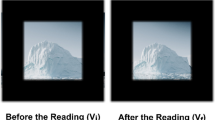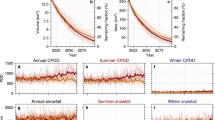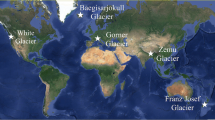Abstract
Glaciers play a vital role as climate change indicators, offering valuable insights into global climate evolution and the wide-ranging impacts of glacier melting on nearby cities, including water supply and ecosystems. The hydrology of Antisana glacier, which provides high-quality drinking water to Quito and its surrounding region, is of critical research importance. In this context, this work aims to explore the potential of machine learning in predicting the mass balance of glaciers in Ecuador, specifically in Antisana Glacier 12 \(\alpha \). To achieve this, a comprehensive dataset of climatic variables from a region of Antisana was collected and processed using TerraClimate and ERA5 datasets. Many ARIMA models, were developed and compared. The ARIMA(0,0,1) configuration provided reliable predictions. Precipitation and surface pressure were identified as significant variables, with precipitation having a substantial effect on glacier mass balance, as confirmed by the forecast results. This study emphasizes the importance of machine learning to improve our understanding of glacier dynamics and support informed decision-making in the face of climate change. Collecting additional specific data to enhance accuracy and comprehensive experience of volcano dynamics is recommended. Incorporating these additional data into the analysis will allow for model refinement and more accurate forecasts. Furthermore, considering alternative machine learning techniques alongside traditional statistical approaches can capture complex interactions, reveal non-linear relationships, and further improve prediction accuracy.
Access this chapter
Tax calculation will be finalised at checkout
Purchases are for personal use only
Similar content being viewed by others
References
Abatzoglou, J.T., Dobrowski, S.Z.: Terraclimate, a high-resolution global dataset of monthly climate and climatic water balance from 1958–2015. Sci. Data 5(1), 180160 (2018)
Basantes-Serrano, R., et al.: Slight mass loss revealed by reanalyzing glacier mass-balance observations on Glaciar Antisana 15\(\alpha \) (inner tropics) during the 1995–2012 period. J. Glaciol. 62(231), 124–136 (2016). https://doi.org/10.1017/jog.2016.17
Basantes-Serrano, R., Rabatel, A., Vincent, C., Sirguey, P.: An optimized method to calculate the geodetic mass balance of mountain glaciers. J. Glaciol. 64(248), 917–931 (2018)
Bolibar, J., Rabatel, A., Gouttevin, I., Galiez, C., Condom, T., Sauquet, E.: Deep learning applied to glacier evolution modelling. Cryosphere 14(2), 565–584 (2020). https://doi.org/10.5194/tc-14-565-2020. https://tc.copernicus.org/articles/14/565/2020/
Box, J.E.: Greenland ice sheet mass balance reconstruction. PART II: Surface mass balance (1840–2010). J. Clim. 26(18), 6974–6989 (2013)
Braithwaite, R.J., Zhang, Y.: Modelling changes in glacier mass balance that may occur as a result of climate changes. Geogr. Ann. Ser. B 81(4), 489–496 (1999)
Braithwaite, R.J., Zhang, Y.: Sensitivity of mass balance of five swiss glaciers to temperature changes assessed by tuning a degree-day model. J. Glaciol. 46(152), 7–14 (2000)
Brockwell, P.J., Davis, R.A.: Introduction to Time Series and Forecasting. Springer Texts in Statistics, Springer, Heidelberg (2016). https://doi.org/10.1007/978-3-319-29854-2
Caro, A., Condom, T., Rabatel, A.: Climatic and morphometric explanatory variables of glacier changes in the Andes (8-\(55^{\circ }\text{s}\)): new insights from machine learning approaches. Front. Earth Sci. 9 (2021). https://doi.org/10.3389/feart.2021.713011. https://www.frontiersin.org/articles/10.3389/feart.2021.713011
Cryer, J.D., Chan, K.S.: Time Series Analysis. Springer, New York (2008). https://doi.org/10.1007/978-0-387-75959-3
Dussaillant, I., et al.: Two decades of glacier mass loss along the Andes. Nat. Geosci. 12(10), 802–808 (2019)
Greuell, W.: Hintereisferner, Austria: mass-balance reconstruction and numerical modelling of the historical length variations. J. Glaciol. 38(129), 233–244 (1992)
Guillete, R.: Dynamics of climate change: explaining glacier retreat mathematically. Undergradute Rev. 11, 73–80 (2014). http://vc.bridgew.edu/honors_proj/55
Manciati, C., Villacís, M., Taupin, J.D., Cadier, E., Galárraga-Sánchez, R., Cáceres, B.: Empirical mass balance modelling of South American tropical glaciers: case study of Antisana volcano, Ecuador. Hydrol. Sci. J. 59(8), 1519–1535 (2014). https://doi.org/10.1080/02626667.2014.888490
Marzeion, B., Hofer, M., Jarosch, A., Kaser, G., Mölg, T.: A minimal model for reconstructing interannual mass balance variability of glaciers in the European alps. Cryosphere 6 (2012). https://doi.org/10.5194/tc-6-71-2012
Mills, T.: Applied Time Series Analysis: A Practical Guide to Modeling and Forecasting. Elsevier Science (2019). https://books.google.com.ec/books?id=ntoxvQEACAAJ
Muñoz Sabater, J.: ERA5-Land monthly averaged data from 1950 to present. Copernicus Climate Change Service (C3S) Climate Data Store (CDS) (2019). https://doi.org/10.24381/cds.68d2bb30. Accessed 24 Apr 2023
OriginLab Corporation: OriginPro
Rignot, E., Thomas, R.H.: Mass balance of polar ice sheets. Science 297(5586), 1502–1506 (2002)
Acknowledgment
The authors express their gratitude to the Data Science and Analytics (DataScienceYT) group at Yachay Tech University for their assistance during the development of this work.
Author information
Authors and Affiliations
Corresponding author
Editor information
Editors and Affiliations
Rights and permissions
Copyright information
© 2023 The Author(s), under exclusive license to Springer Nature Switzerland AG
About this paper
Cite this paper
Marin-Calispa, H., Cuenca, E., Morales-Navarrete, D., Basantes, R. (2023). Machine Learning Applied to the Analysis of Glacier Masses. In: Maldonado-Mahauad, J., Herrera-Tapia, J., Zambrano-Martínez, J.L., Berrezueta, S. (eds) Information and Communication Technologies. TICEC 2023. Communications in Computer and Information Science, vol 1885. Springer, Cham. https://doi.org/10.1007/978-3-031-45438-7_11
Download citation
DOI: https://doi.org/10.1007/978-3-031-45438-7_11
Published:
Publisher Name: Springer, Cham
Print ISBN: 978-3-031-45437-0
Online ISBN: 978-3-031-45438-7
eBook Packages: Computer ScienceComputer Science (R0)




